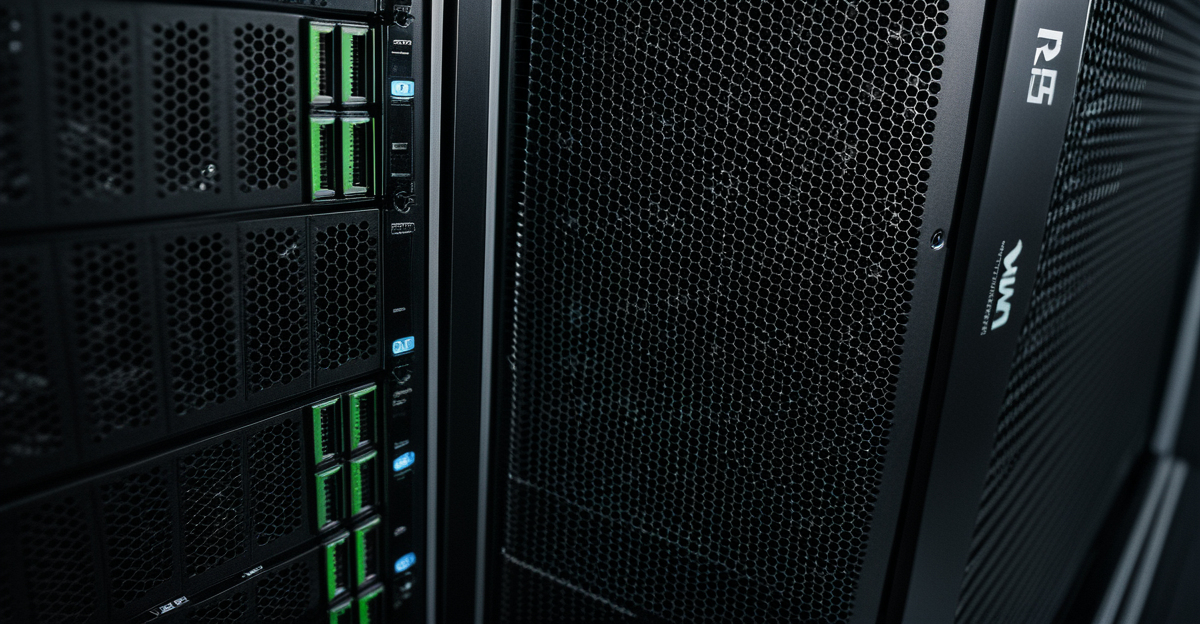Understanding servers is key to optimizing your IT setup. These systems provide essential services—from storing files to hosting websites—making networks run smoothly. Choosing premium refurbished servers offers a cost-effective way to access reliable hardware without sacrificing performance, helping both beginners and professionals build efficient, scalable environments with trusted technology.
What a Server Is and How Servers Work in Modern IT
You can view more details on this page: https://eshop.evernex.com/.
Also to discover : Upgrade your it infrastructure with high-quality refurbished servers
A server is a powerful computer or software program that delivers resources, data, or services to other computers (clients) over a network. Servers form the backbone of IT, enabling file sharing, email, web hosting, gaming, and remote work by responding to client requests. In a typical client-server model, clients send requests and receive responses from dedicated or virtual servers, with both roles sometimes merging—modern servers can act as both providers and consumers of services within the same network.
Servers rely on specialized hardware components: multiple CPUs, error-correcting memory, redundant power supplies, and robust network interfaces to ensure reliability and continuous uptime. Rack-mounted and blade configurations are common in data centers, supporting high-density, scalable deployments.
Also read : What Might Be the Future Breakthroughs in UK Computing Hardware?
The rapid adoption of virtual servers and cloud infrastructure allows organizations to host hundreds of virtual machines on a single physical server, promoting both cost efficiency and operational flexibility. For new or expanding setups, refurbished servers present a sustainable alternative. They combine reliability with affordability, often tested and warrantied by certified vendors. This encourages organizations to modernize IT with less environmental impact and reduced costs.
Main Types of Servers and Their Real-World Applications
Web servers, mail servers, and database servers: primary roles and examples
Web server software options such as Apache, Nginx, or Microsoft IIS deliver websites and content to users’ browsers. These are central for businesses prioritizing content delivery optimization and responsive digital experiences. Database server optimization is critical for processing large-scale client requests; platforms like SQL Server and Oracle are tailored for high transaction loads. Notably, database server optimization involves using advanced indexing, query tuning, and efficient storage selection, directly impacting performance for high-traffic applications.
File, print, and application servers: streamlining collaboration and resources
File servers act as shared storage hubs, powering cloud infrastructure management through organized, secure access to documents. Application servers host business and collaboration tools, relying on robust web server software options for seamless delivery. Storage area networks often underpin these roles, supporting data backup strategies and high availability configurations crucial for teams needing uninterrupted access.
Virtual servers and proxy servers: enhancing efficiency, security, and scalability
Virtual machine deployment lets organizations run multiple workloads on minimal hardware via server virtualization technology, optimizing cost and space. Proxy server usage and benefits include isolating clients from internal networks, with proxy server usage and benefits spanning anonymity, load distribution, and network traffic routing. Deploying proxy server usage and benefits improves security by controlling data flow and reducing direct exposure.
Essential Server Hardware, Operating Systems, and Management Practices
Fundamental Hardware Features and Rack-Mounted/Blade Form Factors for Data Centers
Server hardware components like multi-core processors, ECC memory, and hot-swappable drives deliver stability and support continuous operation in demanding data center environments. Modern data centers often rely on rack-mounted vs blade servers for scalability and efficiency. Rack-mounted servers provide robust hardware resources per unit (1U, 2U, 4U), delivering flexibility for various workloads, while blade servers enhance density, allowing multiple server blades to share power, cooling, and networking within a chassis. Selecting between rack-mounted vs blade servers hinges on space constraints, power capacity, and expansion needs. Modular hardware in these configurations streamlines maintenance, reduces downtime, and optimizes performance-per-square-meter.
Leading Server Operating Systems: Windows Server, Linux, and Unix for Reliability and Scalability
Server operating systems comparison begins with Windows Server, known for its graphical management tools and seamless integration with enterprise software. Linux server administration stands out for customization, security, and efficiency, preferred for web, DNS, and application hosting. Unix derivatives remain prominent in legacy and mission-critical uses. Balancing usability and security, both Windows server management and Linux server administration offer robust networking, virtualization, and automation features vital for business continuity.
Server Monitoring, Management Tools, and Integrated Security Best Practices
Server monitoring tools underpin proactive equipment management. They measure server hardware components’ health, helping IT teams respond to metrics such as temperature or performance anomalies. Modern server monitoring tools integrate with security protocols, supporting compliance and disaster response plans. Combining remote administration, logging, and rapid hardware replacement, administrators can maintain both uptime and security in data centers utilizing rack-mounted vs blade servers and diverse operating systems.
Trends in Server Deployment: Virtualization, Cloud Services, and the Value of Refurbished Servers
Server Virtualization, Cloud Infrastructure Management, and Cloud-Based Hosting for Agility and Scaling
Server virtualization technology currently drives efficiency in data center operations by allowing multiple virtual machines to share a single set of server hardware components. This consolidation minimizes hardware refresh cycles and reduces capital expenses. Organizations increasingly rely on cloud-based server hosting for rapid scaling and agile deployments, easily adjusting resources as business demands shift. The adoption of server virtualization technology means businesses can quickly deploy, migrate, or recover services, boosting resilience and minimizing downtime. Cloud infrastructure management tools simplify these processes by enabling remote server monitoring and precise resource allocation, directly impacting productivity.
Cost, Sustainability, and Procurement Considerations with Refurbished Servers for Modern IT Environments
Refurbished server benefits address budget, sustainability, and procurement priorities for IT teams managing hardware refresh cycles. Choosing refurbished servers extends the lifecycle of existing assets, supporting organizational sustainability goals while saving money. These options are rigorously tested to match performance benchmarks, making them comparable in reliability to new equipment. In addition, refurbished server benefits reach beyond cost, offering flexibility in expansion and replacement without heavy lead times. Procurement processes become more agile, and organizations contribute to reducing electronic waste inherent in frequent hardware refresh cycles.
Industry Certifications and Standards: Assurance of Quality, Security, and Environmental Management
Certifications verifying data center operations—such as ISO standards in quality, environmental, and information security management—offer reassurance for organizations integrating refurbished server benefits. Adherence to standards ensures both compliance and operational excellence, especially when combined with modern server virtualization technology and cloud-based server hosting.











